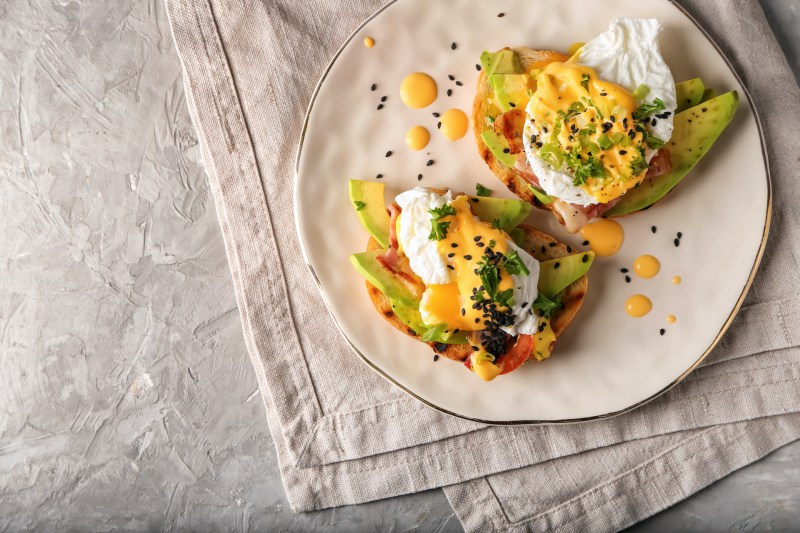
During my very first break from culinary school, I went home to visit my parents. As one does, I’d decided to show off with all of my fancy new culinary know-how and spent the weekend preparing a royal spread of pastries, breads, desserts, and every meal I could dream up…or had at least had jotted down in one of my notebooks. But on the third or fourth morning, exhausted from croissants and brioche, I decided to make for my my parents eggs benedict, complete with the most silky and buttery of all the sauces – hollandaise. Hollandaise sauce is truly something straight from the gods. Traditionally made from egg yolk and butter, emulsified slowly over low heat and accentuated with a lemony kiss, this velvety sauce is what brunchtime dreams are made of. Traditionally served over a number of dishes, it just doesn’t get any more delicious than a classic hollandaise.
Unfortunately, however, this delicious sauce can also be one of the most finicky to make. That morning with my parents, hopeful and full of joy and optimism after spending a few nights in my childhood bedroom, I set to work making a perfect eggs benedict with hollandaise for my sweet parents. I did everything right. The eggs were tempered, the bain marie was perfect, the eggs were poached to perfection. And then, out of nowhere and with no warning, along with my sweet young heart, my hollandaise broke. In a fury of embarrassment, I poured the entire batch down the drain and started again. And again. If memory serves, it was the fourth batch that finally worked, though I’d done absolutely nothing different than in the first three batches. Needless to say, it was a frustrating (and expensive) morning.
Since that time, I’ve mastered the art of hollandaise, but I’m not afraid to admit that – despite my experience – even I’m not immune to the fickle and unpredictable whims of hollandaise. That’s why I love a foolproof shortcut. Especially one that involves one of my very favorite ingredients – mayonnaise. Mayonnaise gets a bad rap, but this beautiful ingredient is really nothing but egg and oil, whipped and emulsified into creamy perfection. So, why all the hate? It’s something I’ll never understand.
If you, like me, have found yourself needlessly frustrated on an otherwise beautiful Saturday morning, bent over your broken hollandaise sauce, spewing expletives, there is a better way. By swapping your egg yolks for mayonnaise in this simple hollandaise recipe, you can have a beautiful sauce on the table in less time than it takes you to toast your English muffins.
Microwave hollandaise recipe
Ingredients
- 1/2 cup + 2 tablespoons butter
- 9 tablespoons mayonnaise
- 1 tablespoon fresh lemon juice
- 1 tablespoon water
- 1 pinch cayenne pepper
- 1/4 teaspoon salt
Method
- Place all ingredients in a microwave-safe bowl.
- Microwave for a minute and a half, pausing halfway through to stir.
- Continue to microwave in 20-second intervals until you’ve reached your desired temperature.

Microwave hollandaise tips and tricks
- If the sauce is too thick for your liking, you can whisk in small amounts of hot water slowly until it reaches your desired consistency.
- There’s no shortage of things you can do with hollandaise. Of course, it’s wonderful poured over any brunchtime classic, but we also love it with steak, or roasted vegetables like asparagus, artichokes, green beans, broccoli, cauliflower, zucchini, or absolutely anything else you happen to be serving.




